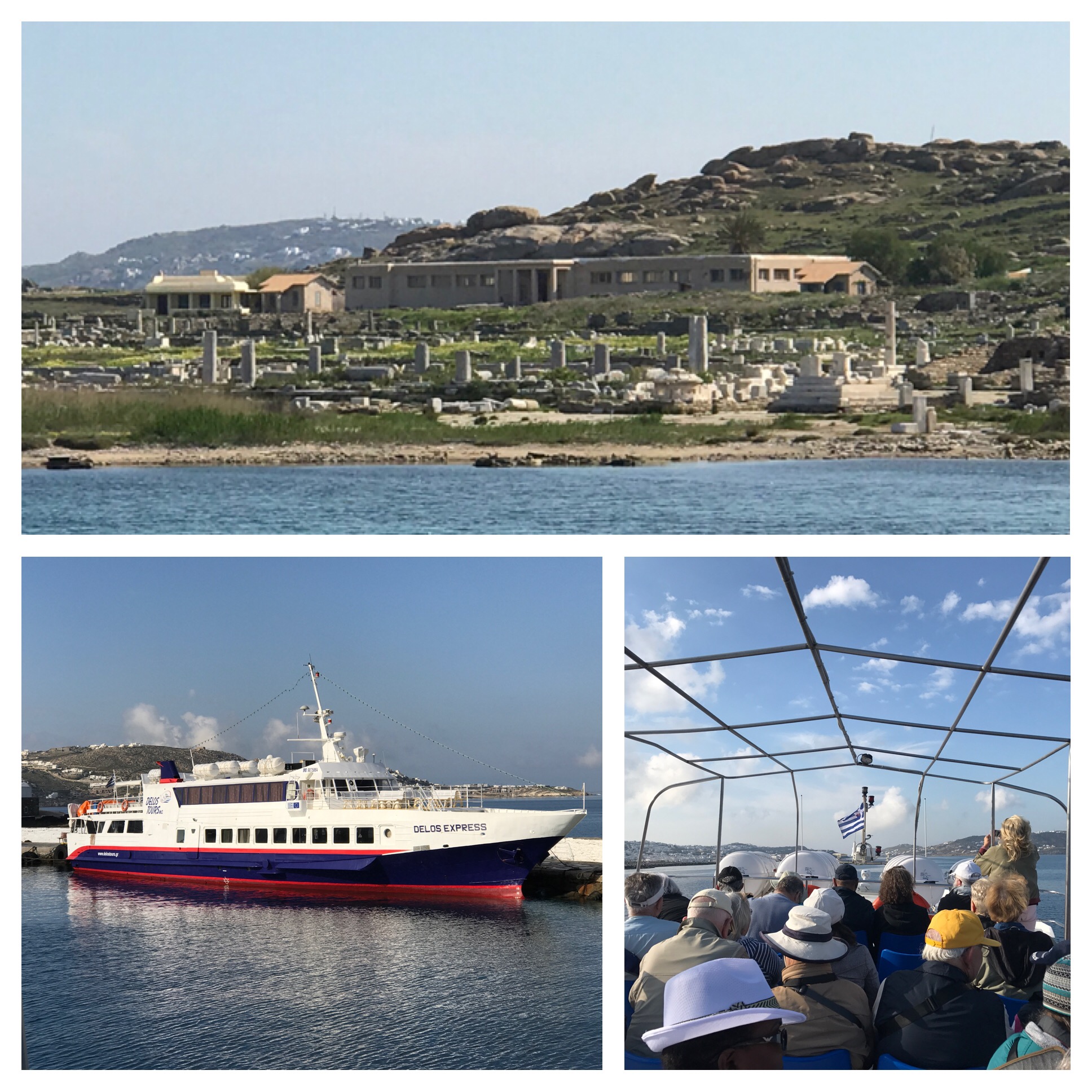
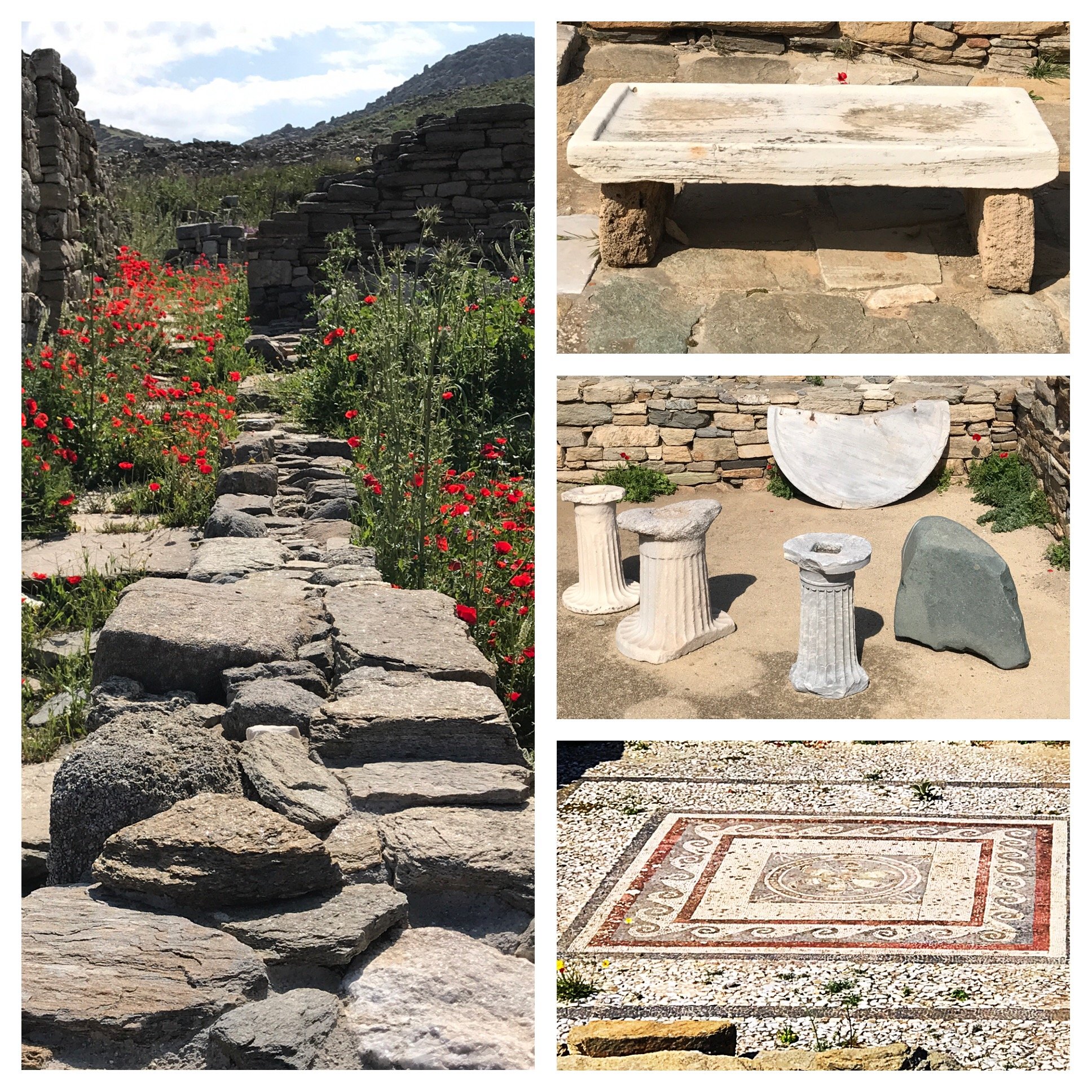
Day 93 of 111. Delos, Greece
Delos was the mythical birthplace of Apollo — god of light and music — and his twin sister Artemis. These were the children of Zeus and Leto. The sacred island is uninhabited, but its earliest settlements date to the 3rd millennium BC. The entire island is an archeological site and was reached by two boat rides (about 35 minutes). We visited in the perfect time, Spring and a little before tourist season. The island was covered with wildflowers and only about 100 visitors were on the five square mile island. Only about one third of the island has been excavated, but most of the walls are original and tables, pedestals, and mosaics were left largely where they were found.
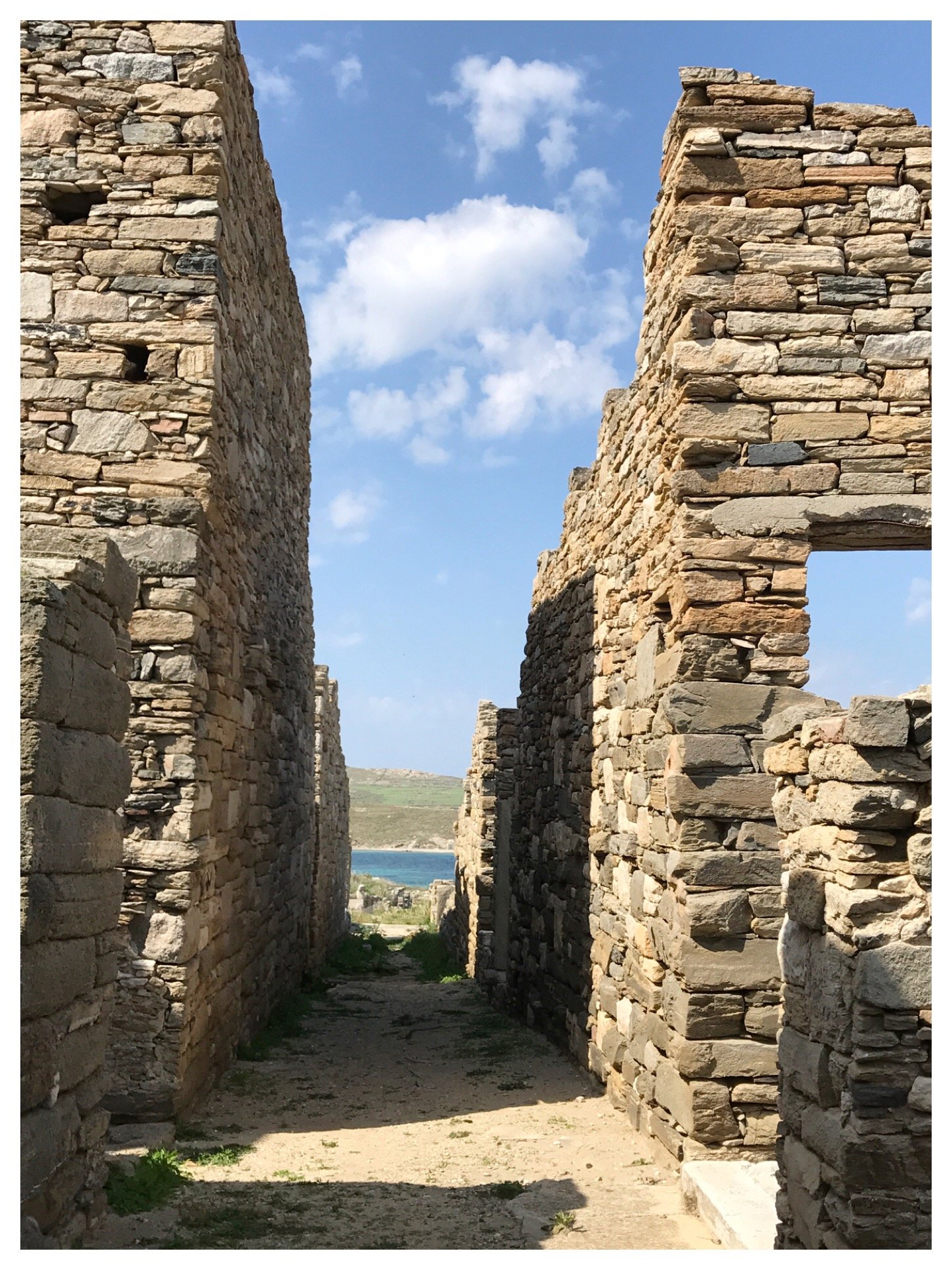
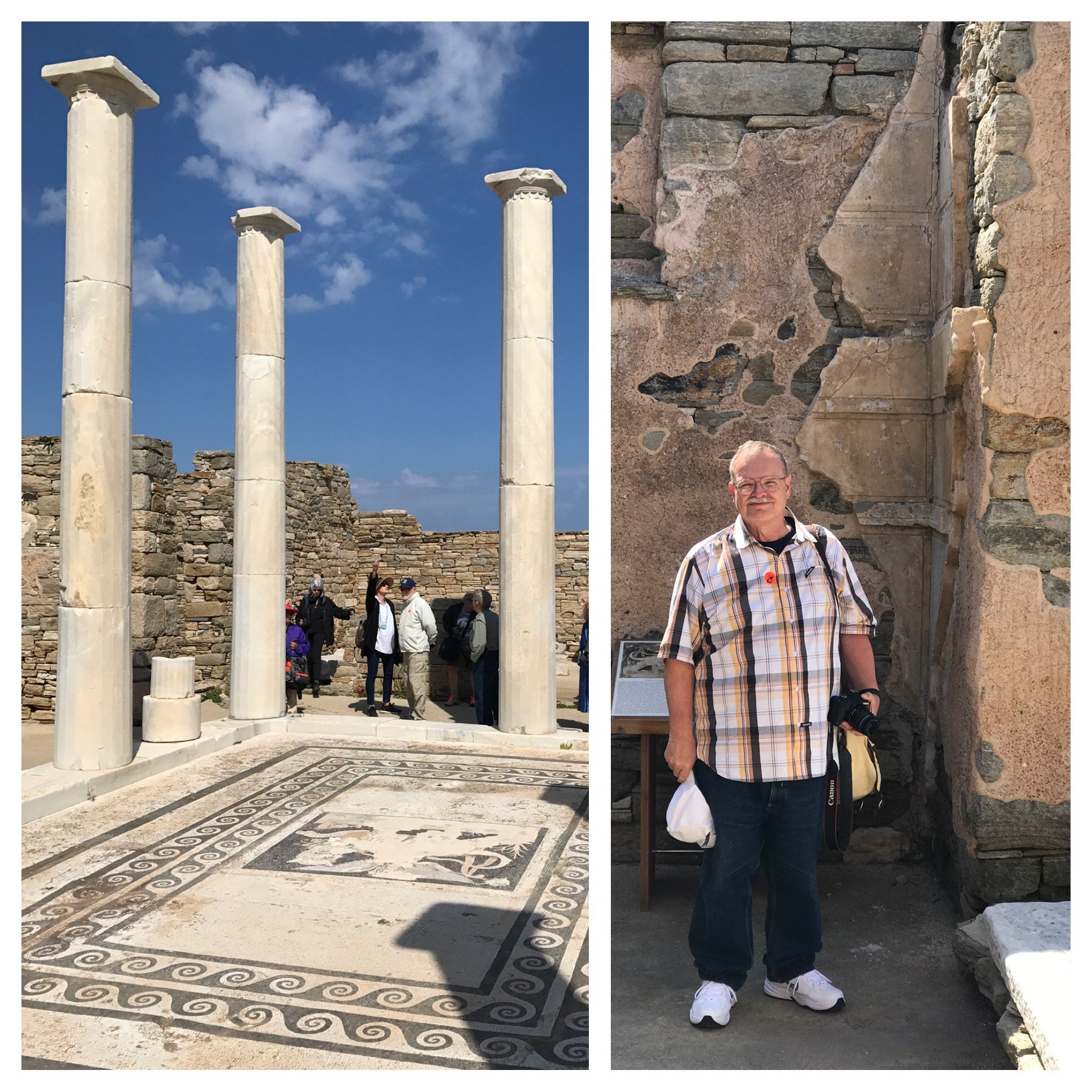
One of the best parts of this island is that it is a complete city that has been preserved and not just the important temples or houses. Shops, temples, streets, the theater, and shrines are represented. Above, we visited a wealthy person’s house with a huge mosaic on the floor. The columns supported the second floor around this open-air atrium. Below the floor was a water reservoir that could be accessed by two wells in the corner of the room. Also, on hot days, the mosaic floor was filled with water that would reflect the light and evaporate to cool the house. On some of the walls (behind Ron) the original plaster still remained.
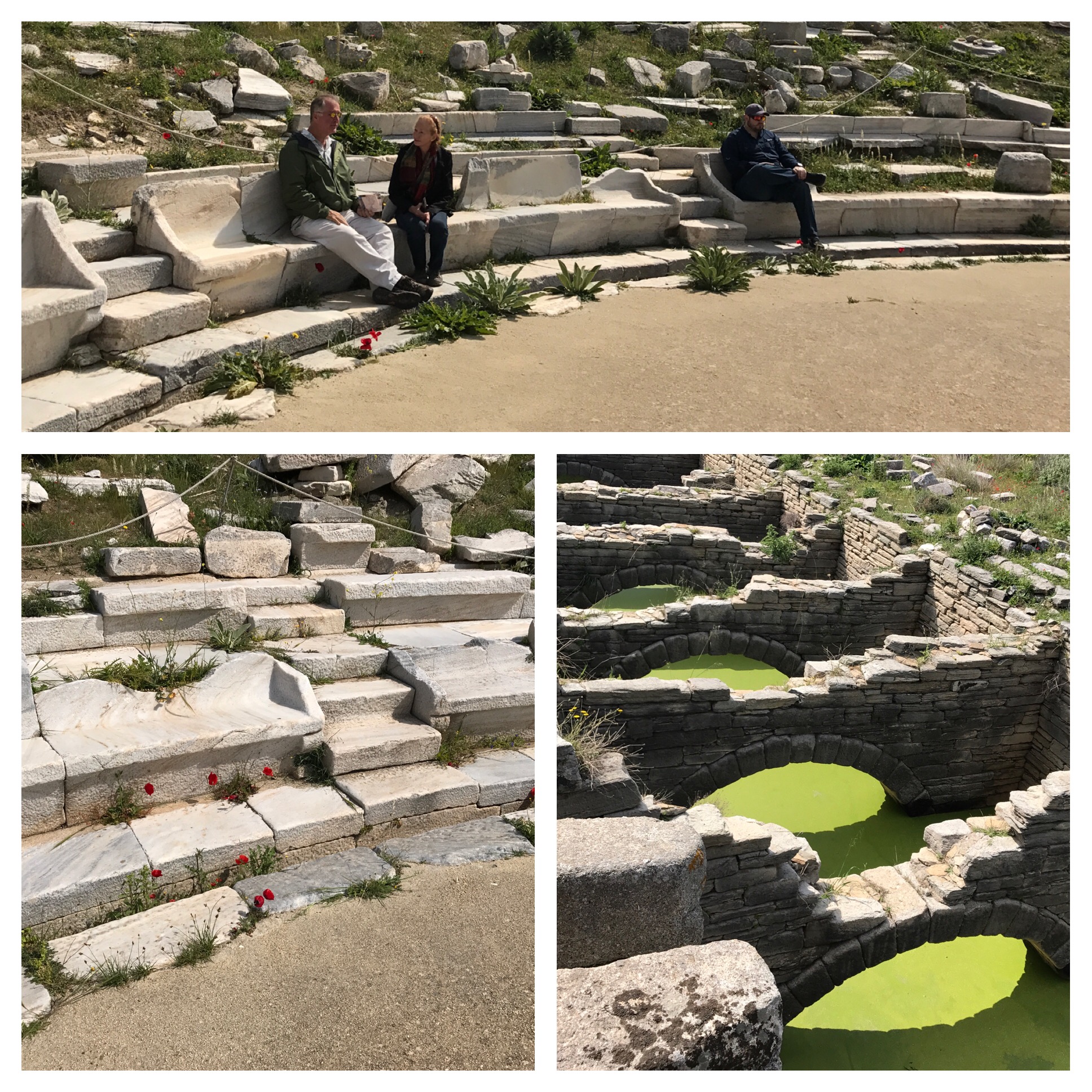
The theater was less intact than some other areas of the city because it was made of marble. The marble pieces were taken away over time for other building projects after the city became disused. Notice that the front rows had seats with backs on them. The wealthier citizens got those seats and poorer citizens sat farther back, however, the wealthier people paid for the tickets for poorer people as part of their tax. Theatrical entertainment was meant for everyone. A little way down from the theater was a public water reservoir. It would have been covered and small holes would have been where anyone could access the water. The clever thing is that the there is a small trench at the bottom of the front row of theater seats that connects to the reservoir. The entire theater was a rain-collector that helped keep the reservoir filled.

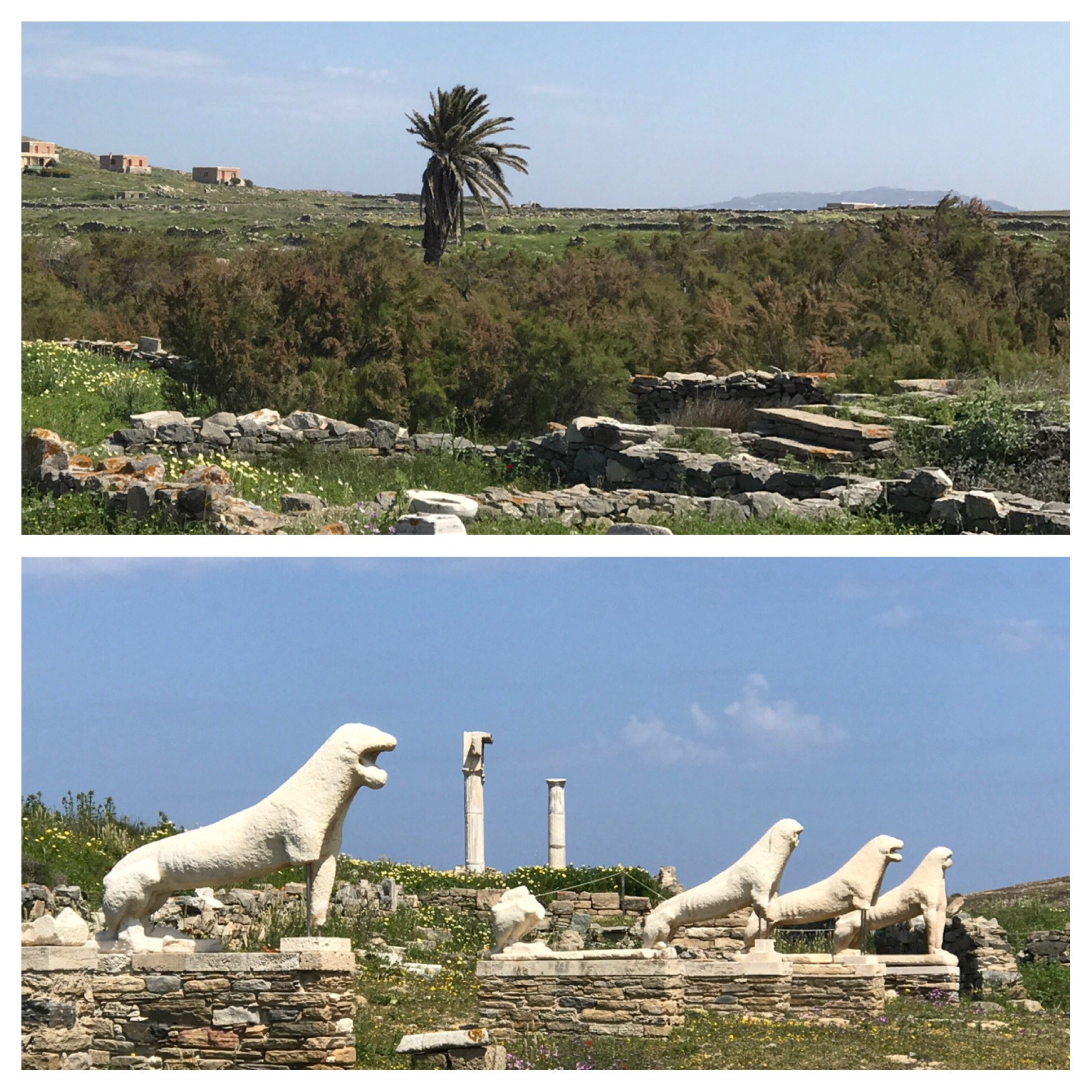
Delos, as the birthplace of Zeus’s son and daughter, was an important pilgrim site. Temples were built to honor Apollo and Artemis and people came from all over to visit them. Because of this attraction, businesses sprang up on the island to support the pilgrims. Rome took over the island and declared it a duty-free zone which further enhanced commerce in the area. Unfortunately, because Rome also had many enemies, the island was attacked and it became disused. The ruins were covered by dirt and plants (see the picture above) which hid/protected the ancient city below. The grassy hill and the ancient buildings shown are next to each other, one has been excavated and the other not. The myth is that Zeus fell in love with Leto and when she had her children, she held onto a palm tree in or near a lake. A palm tree was planted at the supposed spot, but the lake dried up in 1926. The terrace of lions overlooks the lake and face the sunrise. The thought is that these lions demonstrate an influence of Egyptian art.
April 8, 2017
Paul Groves